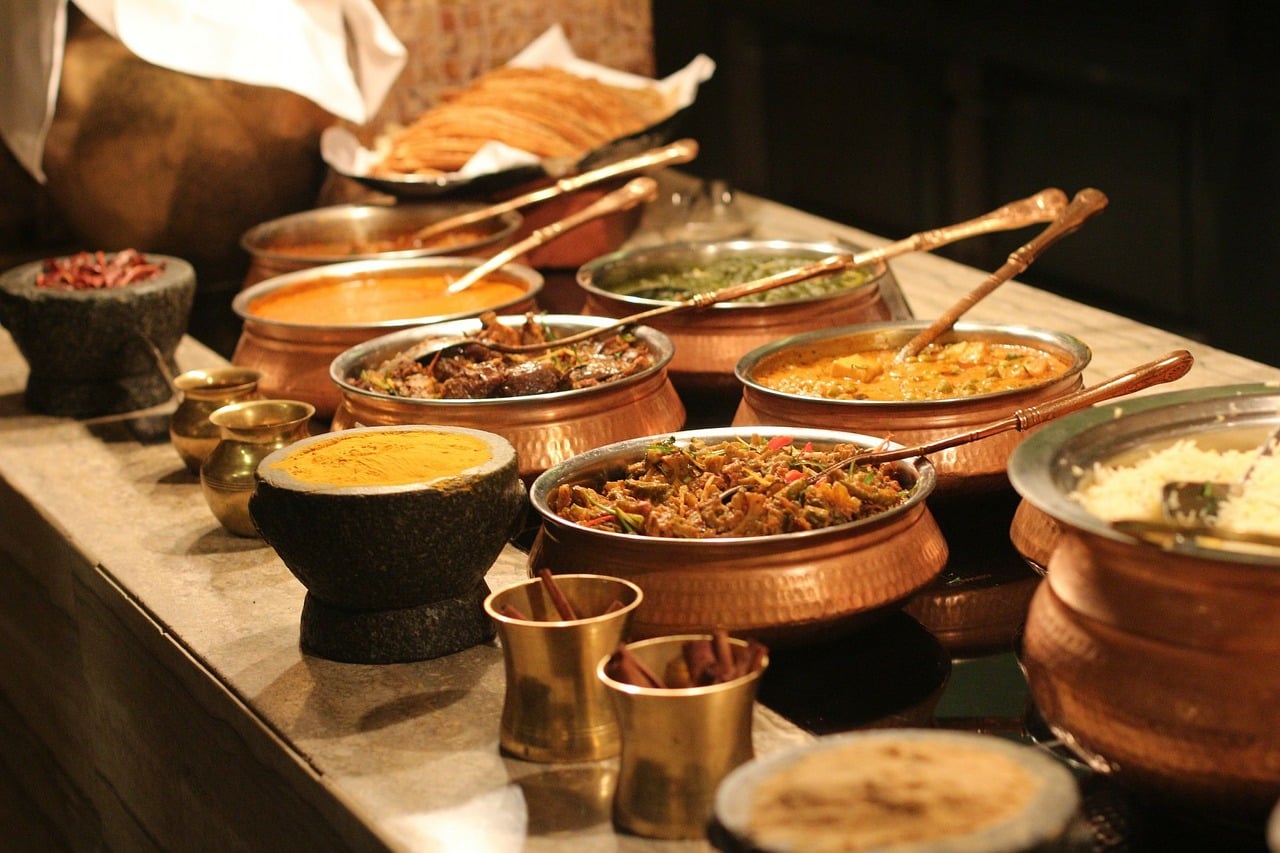India is a land which is enriched with culture and vast heritage. This is reflected in the diversity of food that has emerged throughout the country through the ages. It is safe to say that the Indian Cuisine is by far the most diverse one in its taste and the use of varied ingredients. Indian food is well celebrated for the use of spices like saffron, coriander, ginger, cumin, cloves and several others that enhance the taste in every morsel. A variety of herbs and locally found elements have tied together different kinds of recipes that can be seen in the form of a globally popular cuisine today.
The history of Indian food ranges right back from the Harappan times. In this era, wheat, rice, millet, chickpeas and lentils formed the staple of the average diet. Several citrus and other fruits were used to add flavour. The popular use of cinnamon can also be dated back to these times. The grains were made into stews or soups in which cinnamon was used. Eventually, grain started being baked into flat breads which are today popularly known as chapatis or naan.
Q1 hedge fund letters, conference, scoops etc
During the excavations in the Indus Valley regions, wide platforms and flat metal and clay plates, similar to the present day ‘tava’, have been found. This suggests the earliest hints of some form of chappatis being cooked as wheat was known to be an agricultural staple. Various boiling vessels were also discovered suggesting rice and barley could have been common foods in the era.
The Hindu culture under the Mauryans in 300 BC, drew away from the cycle of animal sacrifices. They took to the notions of vegetarianism. Thus, several of the key Hindu meals are cooked using regionally available fruits and vegetables; along with the array of flavorful spices. The staple such as rice or millet was paired with a variety of lentils like masoor, moong, tuer, urad, etc. Thus, the ‘dal’ of our everyday meals became an important part of the culture. Other regions grew pulses like rajma, chana, lobiya, etc that became delicacies of the north. The lentils form an important source of protein and flavour for any Indian meal.
In the Gupta period around 650 AD vegetable, bread and milk were an integral part of the diet. This is where satvic food became popular to gravitate towards an ideal healthy diet. It consisted of whole grains, fruits and dairy products. Some bent more towards a rajasic diet which incorporated the use of onion, garlic, eggplants, mustard oil and sweet puddings made of rice. Thus, the concept of a balanced diet that would include fruits, vegetables, whole grains, legumes and soy, nuts, seeds, dairy products complemented with some sweets, was adopted.
Towards the eight century more refined ingredients began to be used. The garam masala is popularly used in several Indian dishes. It is a mixture of Dalchini or cinnamon, Laung or cloves, jeera or cumin, Dhaniya or coriander, Elaichi or black cardamom, black peppercorns and star anise. The use of leaves in Indian cooking is another factor that contributes to the unique flavor. Corriander leaves, fenugreek leaves and mint leaves are used to enhance the flavor of dishes. All these were used to prepare flavorful curries which have evolved in the subcontinent since the early times. The sweet dishes were seasoned with saffron, cardamom and nutmeg for an added flavor. Tambol or betel leaves in the form of the 'pan' were used for refreshing the palate after the meal. By this period Indian food had several elements and the flavors of the land seeped through in each recipe that was used.
Thus, the origin of the Indian cuisine can be dated back to centuries ago where these different regions harnessed their local elements to put together remarkably flavorful meals that are cherished even today. These are not only prevalent in Indian homes but are also enjoyed worldwide where a deep appreciation for the Indian spices can be seen. The diversity and flavor in Indian cuisine have enriched through the ages. Thus, these delicious Hindu dishes are adding colour and spice to lives around the world.





